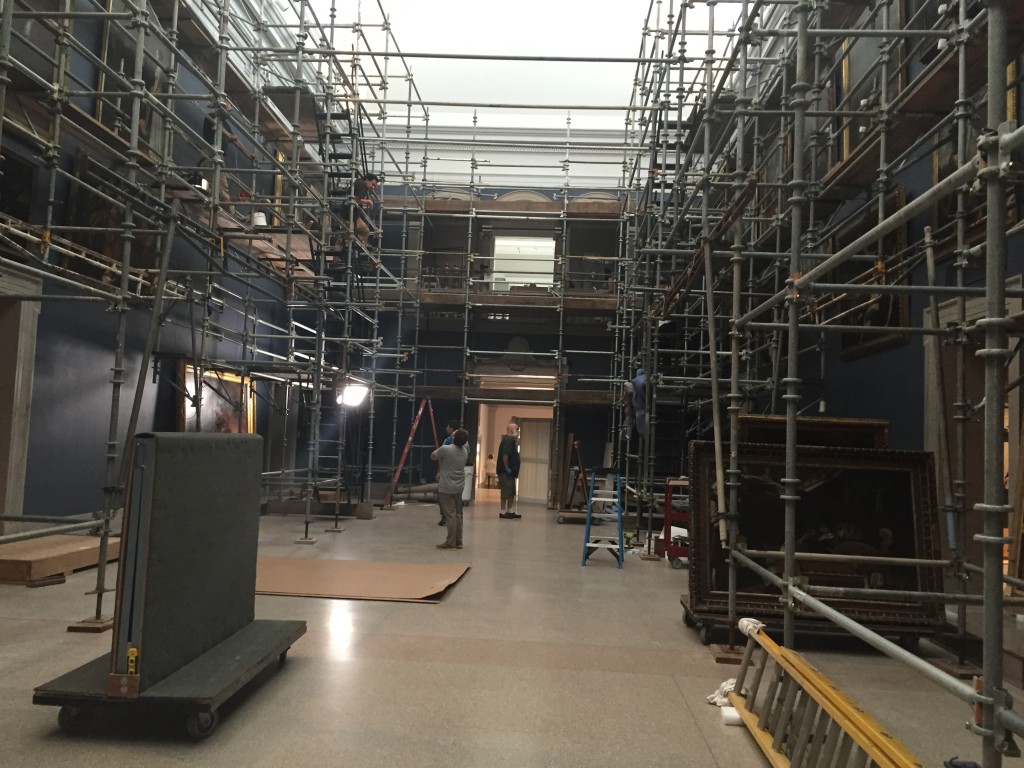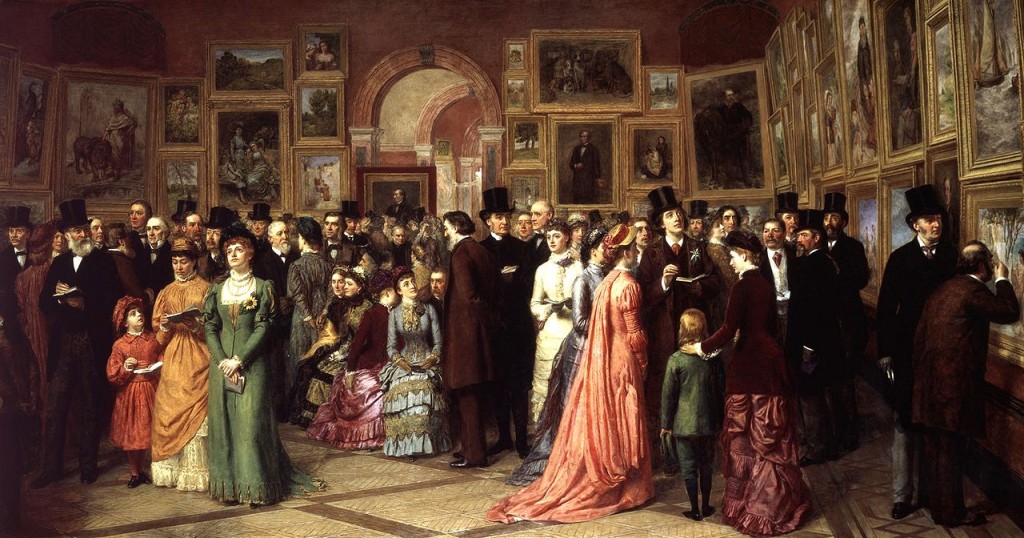Exhibit Craft at the Wadsworth Atheneum
Visits to freshly opened temporary art exhibitions pervaded our class trip through the Northeast. “Made in the Americas” at the Museum of Fine Arts Boston and “All the Sea Knows” at the Florence Griswold Museum stand out as highlights of the trip. Curious as we were about the content of these exhibits, we also wanted to know about the curatorial choices, collaborations, design, and installation processes behind them.
At the Wadsworth Atheneum in Hartford, the Fellows had a chance to look under the hood of art exhibitions. Four weeks before the Morgan Memorial Building was scheduled to open, after a five-year restoration, the galleries were braced and primed for the art to return from storage. In what had been completed, as well as what remained to be done, we gained a fortuitous inside perspective on the craft of exhibition engineering.
 Preparators mount artworks from colossal scaffolds in the Great Hall
Preparators mount artworks from colossal scaffolds in the Great Hall
An ambitious salon style hang in the Great Hall required preparators to mount artworks from floor-to-ceiling scaffolding. In this industrial setting, it was clear that curators Linda Roth and Oliver Tostmann had both planned the hang meticulously and needed selective vision to monitor its execution.
The rough preparatory stage also presented an amusing contrast to the ideal of refined aesthetes gazing up at salon hangs in the eighteenth and nineteenth centuries:
 William Powell Frith, “A Private View at the Royal Academy,” Oil on Canvas, 1883 (Wikimedia Commons)
William Powell Frith, “A Private View at the Royal Academy,” Oil on Canvas, 1883 (Wikimedia Commons)
We encountered more raw states beyond the Great Hall. In galleries where empty display cases stood wide open, images showed how decorative art would eventually be arranged. These decisions are made well in advance to streamline the actual installation process. Curators had developed these assemblages in storage, on shelves not unlike scaffolding, again demonstrating the imagination necessary to formulate exhibitions. It will be exciting to see if the cases and gallery space demanded any adjustments of the preliminary display schemes.
 Gallery display cases with detail of installation plan. Note that the preparators install art from the outside-in. They hang paintings along the walls, before the rooms were full, and install more fragile works of decorative art in the central display cases last.
Gallery display cases with detail of installation plan. Note that the preparators install art from the outside-in. They hang paintings along the walls, before the rooms were full, and install more fragile works of decorative art in the central display cases last.
One of the great distinctions of the re-installation of the Morgan Building, when so many museums introduce change by building additions, is its use of existing resources. One gallery retains cases, reserved for the Harold and Wendy Newman Collection of Veilleuses. Their architecture, wall text, and display methods establish continuity with exhibits past. Seeing the cases without objects exposes the armature of decorative art displays, including upholstered platforms, numbered tacks, mounting hardware as well as text panels identifying donors and collections objects. The composition of the display also comes to light–linear arrangements along shelves, a circular hang on vertical surfaces.
 Empty built-in display cases in the Morgan Building
Empty built-in display cases in the Morgan Building
All of the art exhibits we saw in the Northeast were special, but we were fortunate to visit the Wadsworth Atheneum at this unique time when the plans and moving parts of an installation were still in plain sight.
By Amy Griffin, WPAMC class of 2016

Leave a Reply